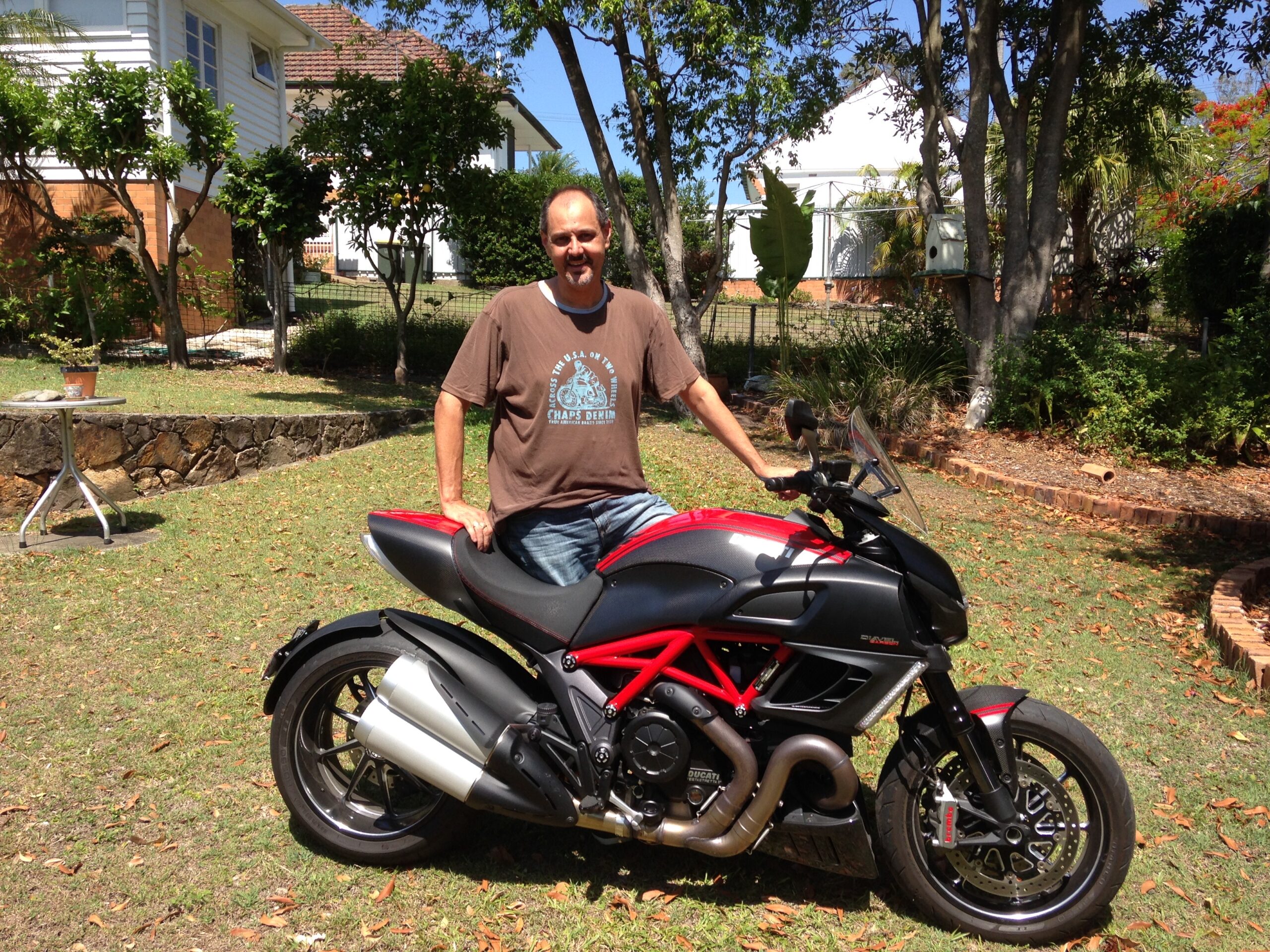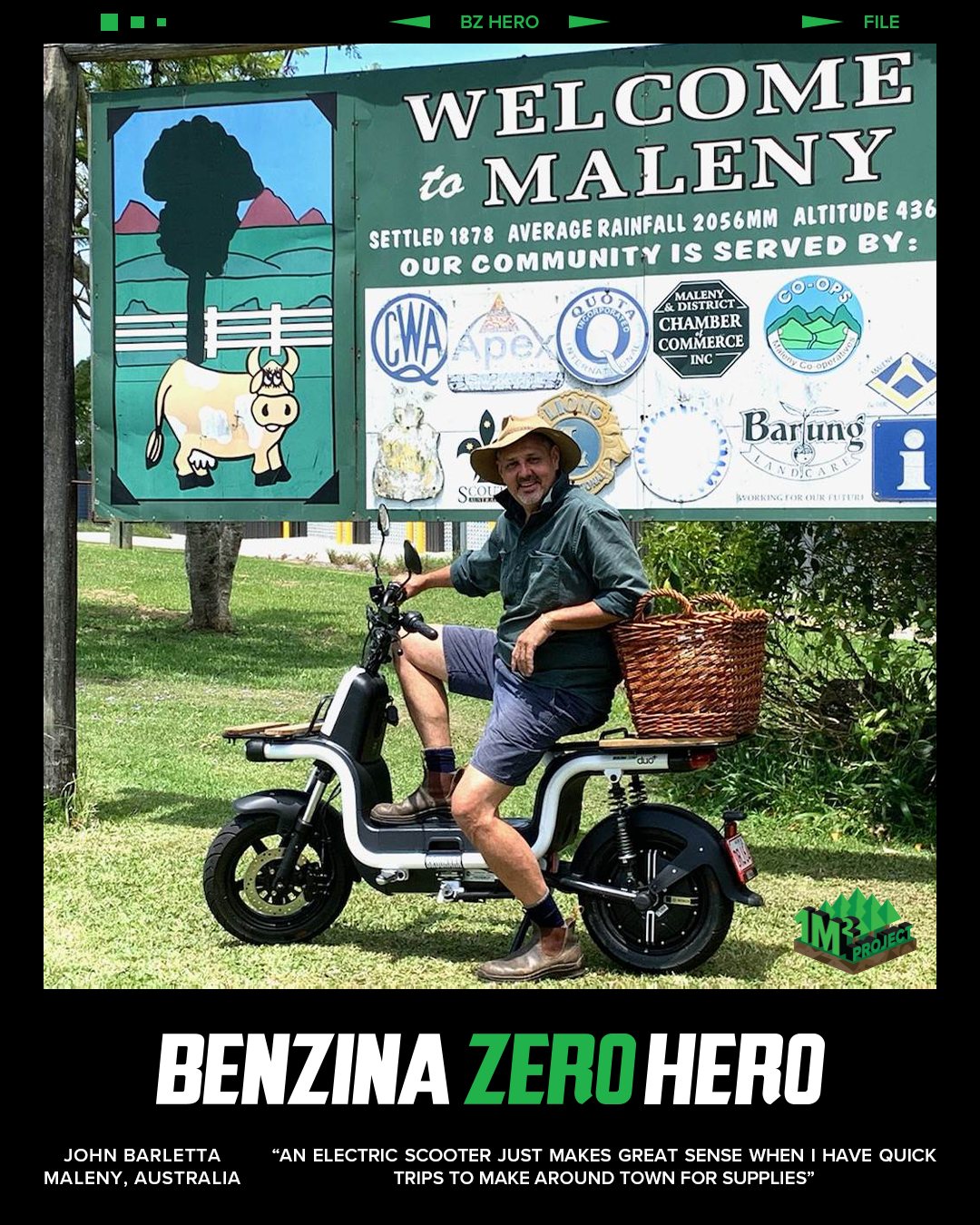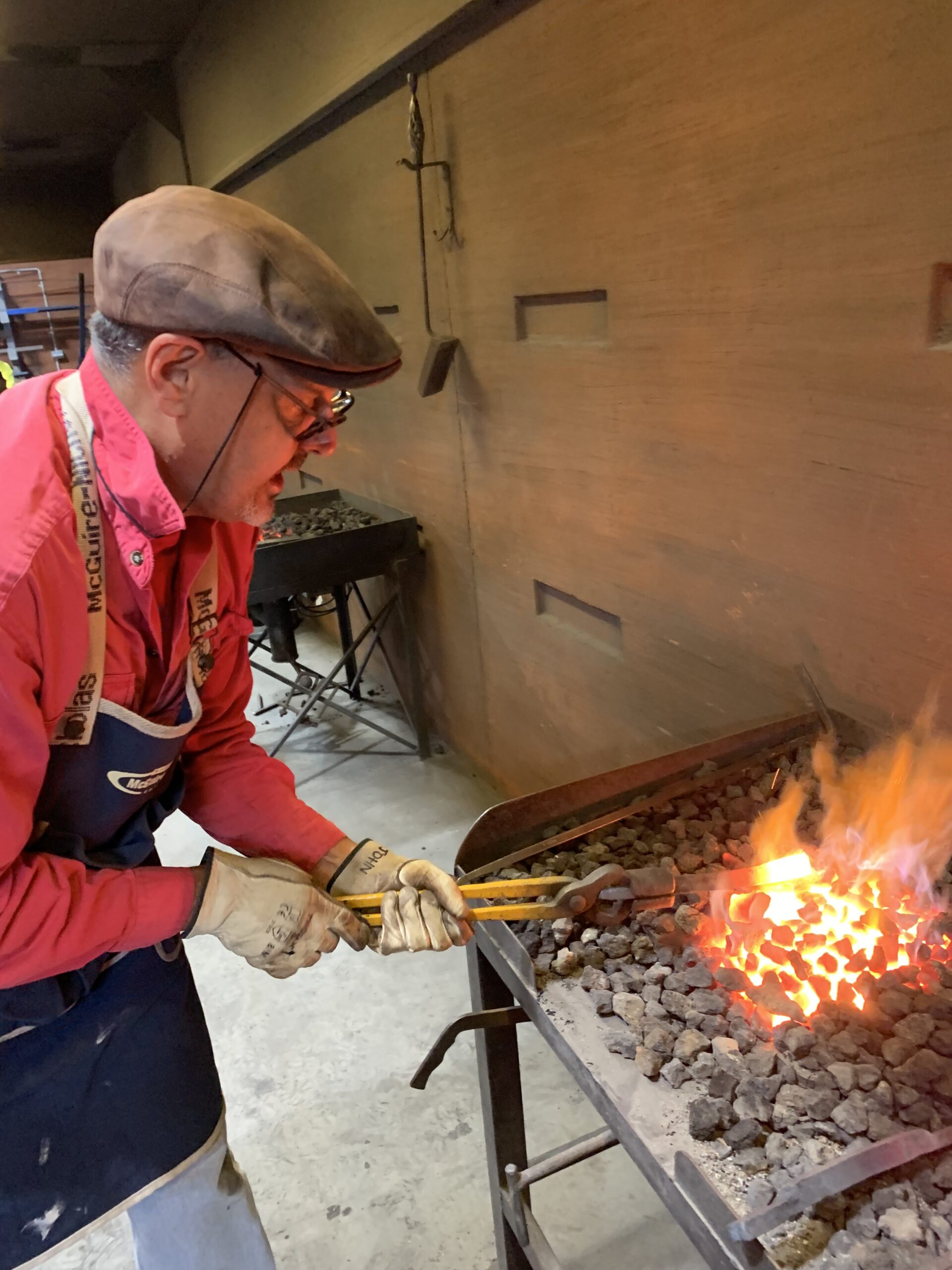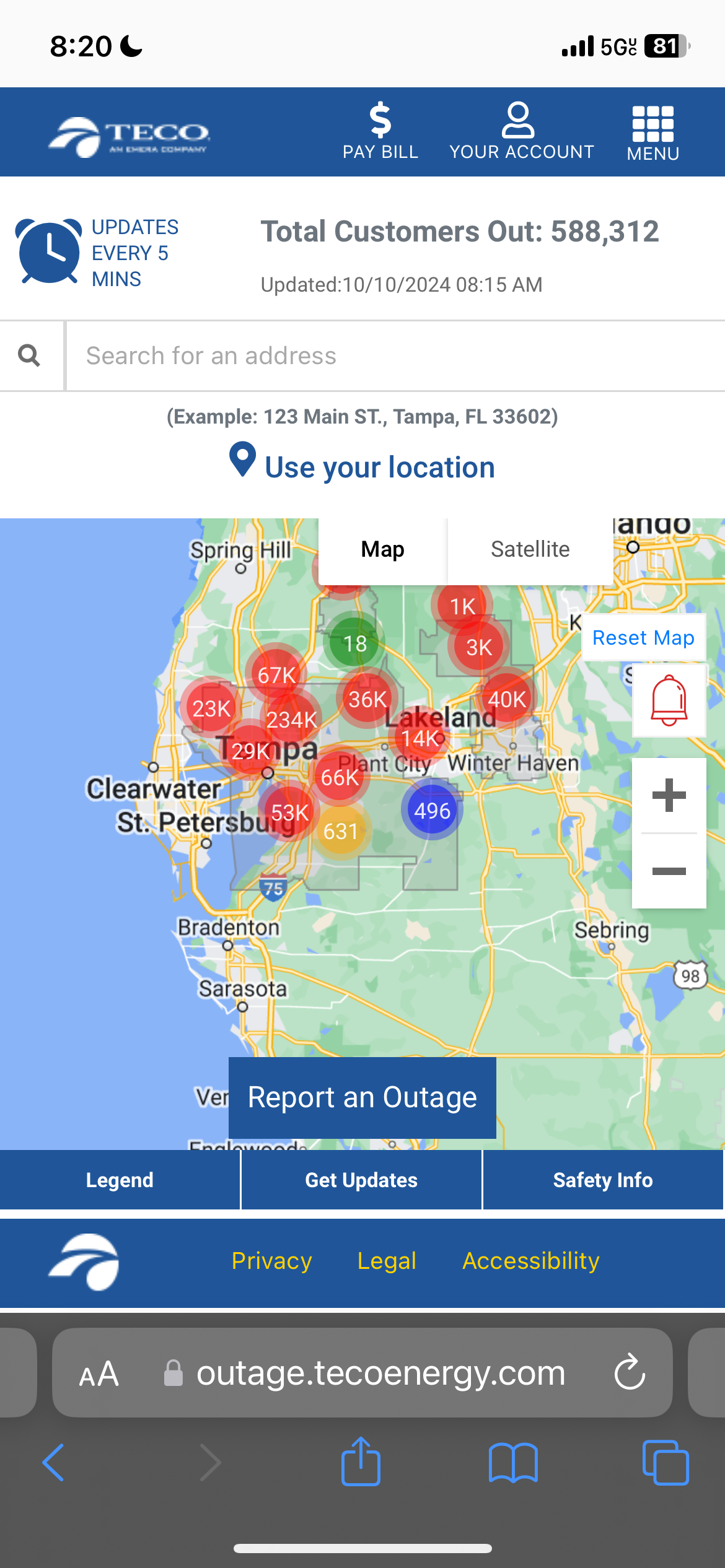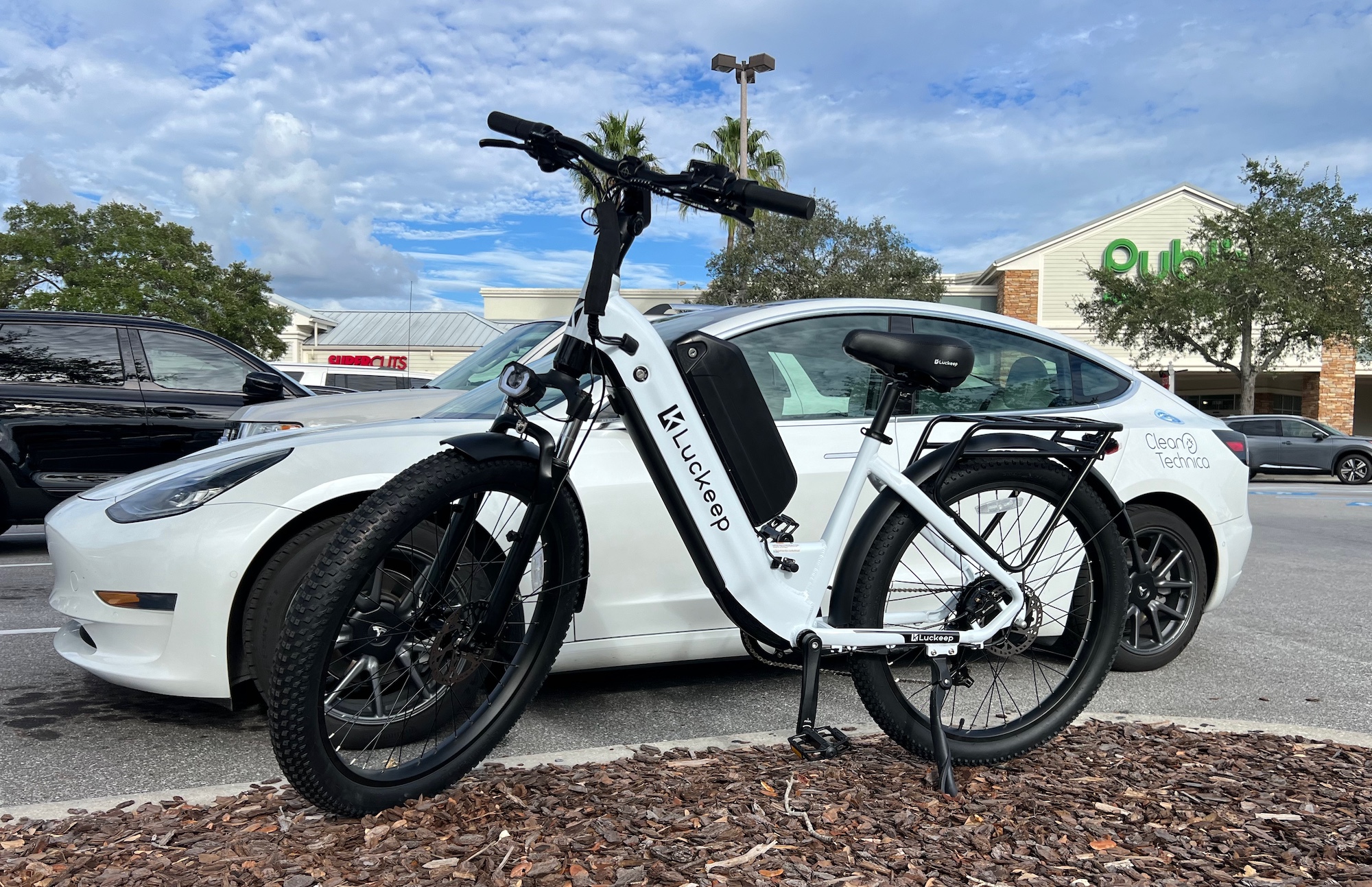Sign up for daily news updates from CleanTechnica on email. Or follow us on Google News!
What’s it like to go from a Ducati to an electric moped? Can you use a scooter to get to work? I asked Ben Silver of Benzina Zero in Australia for some customer reactions to his product offering. He put me in touch with John, Vera, and Stuart. Here are the stories they told me in interviews:
From Ducati to Duo — Yes, It Can Be Done!
John is a retired clinical psychologist who now lives in the mountainous Sunshine Coast hinterland in Queensland. After riding Italian motorbikes and scooters for many years, he decided to give the Duo+ a go. “Being on two wheels is in my blood,” he explained. “It’s a freedom thing.” He was curious about the Benzina Zero Duo+ and is quite surprised with the versatility of the bike. It handles the hilly terrain well, and in “power” mode it can achieve 65 km per hour. The Duo+ charges easily from an external power point.
He finds the Duo+ very easy to park. “When I want to nip into town, I don’t get dirty. In Maleny, the mountains are high and the emperor is far away. There are lots of motorbike parks because heaps of riders come up on weekend.” And if not, he can easily park on a grassy patch. John’s Duo+ is fitted with a wicker basket, firmly attached for hauling groceries or hardware items. He finds it quiet and cool. “Riding the Duo has an ethereal quality. No noise, no smell.” And since he sold his last Ducati, the wife doesn’t worry so much anymore. Sadly, there are no long rides with his mates.
Maleny is very electric vehicle friendly, with lots of charging available, great air quality, and access to natural environments. The Duo fits in well. John says it is like riding the Vespa back in the day. “You could wear an Armani suit on a Vespa.” On the weekends, when the tourist hotspot gets busy, John finds that the Duo can easily handle the gridlock on the main street.
John rides the Duo+ the 2 minutes it takes to get into town, where he uses it for shopping and errands. It doesn’t take up much space. He has had the Duo+ for 12 months and sees it as a cool, sophisticated shopping trolly. John volunteers as a blacksmith at the men’s shed in the historical village. He makes fireplace tools and does repairs. “Heat, beat and repeat,” he says. The tourists love it. So does he — he has his own forge at home.
John tells me that his next car will be electric — he is just waiting for the prices to come down. Then it might be goodbye, Fiat Bambino.
Scootering from Rome to Brisbane
Vera grew up in Rome and has been driving a scooter since she was 14. “In amongst the crazies!” She tells me that she is very aware of people and cars from riding in Europe. She has lived in Australia for the past 20 years and has noticed that there are “so many more scooters since she arrived. But you always need to be aware of other vehicles because the impact they make on you will always be greater than the impact you make on them.” Australia is a country of migrants and a lot riders come from cultures where scooters are embedded.
Vera had been a customer of Scootopia, and when Benzina Zero launched with a competition to win a “City” scooter, she responded to the text with her details. At work on a quiet Friday, she got the phone call and raced into the boss’ office. “I won the scooter!” There was lots of excitement in the office as she told everyone. The boss announced it at a meeting. It was a couple of weeks before the scooter was delivered to her home in Hamilton. She had to pick the colour first. Initially, she just took the scooter around the local neighbourhood. “It was a strange sensation to be on a moving vehicle that is so quiet and has no vibration.” She is still getting used to “a different ride.”
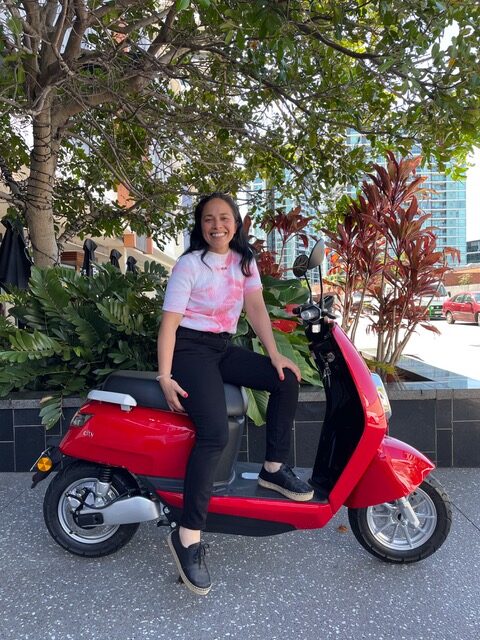
Vera won a Benzina City. This photo was taken on the day she collected it. Photo courtesy of Ben Silver.
“Everyone I have spoken to have been intrigued by it. My friend is considering converting from her Vespa to electric. Everyone in the office knew I had won the scooter when I got the call — they all want to try it but most have never been on a scooter so they are too nervous.” Vera has offered rides, but so far, no one has taken her up on it.
The “City” is equivalent to a 50-cc scooter. By law, you can ride up to 50 km/h. Most of Vera’s previous scooters had been 50-cc. So, it was goodbye to the Aprilia Scarabeo that she had been riding for the past few years. Every other day, she discreetly charges the detachable battery from her “City” by plugging into a power point in the board room. She likes to keep it fully charged. The “City” has a 2.1-kWh battery using LG battery cells and has a range of 80 km.
Vera rides through peak hour traffic to work each day in Brisbane. The daily commute costs nothing on the scooter, but if she needs to go by public transport, it could cost up to AU$35 per week. The two-wheeler gives her a sense of freedom — so quiet and responsive. “The Scooter is faster and more fun in the dense urban traffic. I don’t have to park far away from the office so I can go places during the lunchbreak. That’s convenient.” Vera tells me the electric scooter is more reliable than her previous petrol versions.
Vera likes not relying on petrol and oil. “It’s very positive from an environmental stance and I have less problems with the bike because it is simpler mechanically. So far everyone has been so positive. The building manager has tried it out and would like to get an electric scooter — he rides bikes. It’s great to be able to come and go without disturbing the neighbours.” Vera says she has “snagged” a free park in the building she lives in because the scooter is so small.
When Vera stops at the lights, she checks the screen to make sure the bike is still on before she takes off. “It still feels a little weird.” The bike is not allowed on the highway, nor can she do her shopping with it or take the dog. So, Vera still has a car for those tasks. The scooter has replaced the car for commuting to work. Vera is a strong advocate of Benzina Zero and loves her City.
From Honda to Benzina
Stuart Strickland OAM rides his Benzina Zero Duo+, a quicker version of the Duo electric moped, around Melbourne, the capital of Victoria. He is the former Managing Director of Honda MPE and knows his way around motorbikes. He has always been a champion of small-capacity personal transport. He is now 74 and retired. Stuart is an advisor to Benzina Zero.
Stuart and I caught up by phone (Melbourne is about 1800 km from my base in Brisbane) and he shared his story. His Duo has replaced his previous ride — a Honda 150. The Duo is useful for shopping, community volunteer work, and getting to church through the dense Melbourne traffic. He can charge from a powerpoint in his garage and rides about 100 km per week.
Stuart lives about 5 km from the city centre. He tells me it saves him getting the car out. The Duo is quiet and unobtrusive, the cargo box holds all the shopping and it doesn’t use any petrol or oil. Stuart is keen to tell me that he still has big petrol bikes — on his property outside the city.
Motorcyclists have a bad rep as excessive risk takers, he tells me. They aren’t interested in the Duo because they want power and range. The main market he sees for the Duo is when people want a step up from ebikes. The Duo is versatile and can carry most things, even a surfboard. But it is difficult to define the market niche. He would like governments to be more proactive in the move away from cars in the cities. Perhaps as people embrace environmental issues more, politicians will take note.
He appreciates the fact that the Duo will travel at up to 65 km/hour, perfect for urban riding. Different states have different licensing rules — highlighted in CleanTechnica’s recent article on Benzina. You need a motorcycle licence to even ride the 50cc moped version of the Duo in Victoria. But you don’t need one for an ebike which does about the same speed. Stuart thinks this is ridiculous, and I agree.
When he rides to the café for his morning coffee, it creates a lot of interest. The price is enticing (around AU$5,000), but people are put off by having to get a motorbike licence. This takes a few days and may cost $1,000 for the intensive training. In South Australia, Queensland, and Western Australia, you can ride a Duo on a car licence. Dealers in Victoria who wish to sell the Duo have to be a licensed motor vehicle trader.
“Governments don’t have a clear view of electric mobility. Confusion disadvantages vehicles like the Duo. Is it an electric bike or an electric motorbike? People on lower incomes could benefit by travelling on a Duo,” he adds.
Hopefully, stories like those of John, Vera, and Stuart will encourage people to change perceptions and regulations for the sake of the environment and the ease of city living.
Have a tip for CleanTechnica? Want to advertise? Want to suggest a guest for our CleanTech Talk podcast? Contact us here.
EV Obsession Daily!
I don’t like paywalls. You don’t like paywalls. Who likes paywalls? Here at CleanTechnica, we implemented a limited paywall for a while, but it always felt wrong — and it was always tough to decide what we should put behind there. In theory, your most exclusive and best content goes behind a paywall. But then fewer people read it!! So, we’ve decided to completely nix paywalls here at CleanTechnica. But…
Thank you!
Tesla Sales in 2023, 2024, and 2030
CleanTechnica uses affiliate links. See our policy here.

